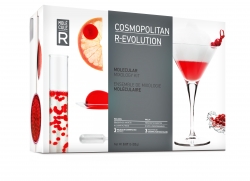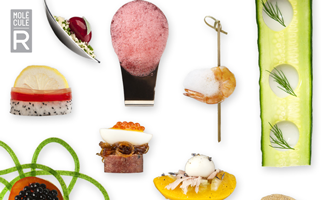Molecular Gastronomy for Beginners
Molecular gastronomy has been gaining popularity in recent years , with celebrity chefs such as Ferran Adrià and Heston Blumenthal rising in prominence. The intriguing fusion of food science and culinary art presents exotic flavours, among them vegetable-spaghettis, salads with balsamic vinegar pearl dressing and the like. Bored with the traditional recipes? Give molecular gastronomy a go and the refreshing results could be worth it!
1) What exactly is molecular gastronomy?
Molecular gastronomy is not a new concept. Its roots can be traced back to second century BC where an anonymous author of a papyrus kept in London used a balance to determine whether fermented meat was lighter than fresh meat. Since then, many scientists have been interested in food and cooking, especially food preparation. The main objective of molecular gastronomy is to understand how food is affected by the various preparation factors and cooking methods by examining it at the molecular level. Infusing scientific knowledge into cooking helps with clearing up myths and old wives’ tales.
2) It is safe to use the ingredients in the latest gastronomy kits?
The latest molecular gastronomy cuisines might sometimes look more like science projects than edible food. While additives with names such as ‘sodium alginate’, ‘calcium salts’ and ‘xanthan gum’ might turn away purists insisting on using only ‘authentic’ ingredients; most of them are, in fact, of biological origin. While there is a purification process involved, the raw materials are usually drawn from marine, plant, animal or microbial. For example, sodium alginate is a salt extracted from the viscous liquid from the cell wall of brown algae. These additives are also used in scant amounts and strictly adhere to EU standards.
3) How can I kick start my molecular gastronomy journey?
Thankfully, there are convenient DIY kits which cost a mere fraction of the professional equipment seen in cooking shows.
One example is the gastronomy kit from Molecular-R, which is simple yet sufficient enough to create dozens of magical dishes. Its Cuisine R-evolution kit includes five types of food additives, pipettes, test tubes, a food-grade syringe and 50 simple recipes in a DVD. For those who want to dazzle their guests with extraordinary cocktails, the Molecular Mixology kit will fit the bill. You can deconstruct your favourite margarita, try layering a martini or serve your drinks in a large bubble and have it burst in your mouth for a different experience.
4) Methods used in molecular gastronomy
| Method | Definition | Additives involved |
| Spherification | The culinary process of shaping a liquid into spheres of liquid held by a thin gel membrane which visually and texturally resembles caviar. | Sodium Alginate Calcium Salts |
| Gelification | The process of turning a liquid into gel which is a solid, jelly-like material that can have properties ranging from soft and weak to hard and tough. | Agar-agar Carrageenan Gelatin Gellan gum |
| Emulsification | The process of turning a liquid into a light, airy foam. | Soy lecithin |
| Thickening | The process of increasing the viscosity of a solution or liquid/solid mixture without substantially modifying its other properties. | Xanthan gum |
| Effervescence | The escape of gas from another body and the foaming or fizzing that result from the release of the gas. An everyday example is seen in carbonated beverages such as soft drinks. | Popping sugar |
| Effervescence | There are different kinds of transformation. • Maltodextrin is a sugar that will turn any fatty liquid such as oil, bacon fat or melted chocolate into powder • Transglutaminase is an enzyme often referred to as “meat glue” that will bind food rich in proteins. |
Maltodextrin Transglutaminase |

Cosmopolitan R-Evolution Kit (32 g)
Impress your friends with three recipes that push the boundaries of modern mixology! Add a molecular twist to your traditional cosmo sure to awe your guests! Serve a cosmopolitan bubble on a spoon that will pop in your mouth, top off your cocktail with a light fluffy cranberry foam or suspend citrus caviar in your drink.

